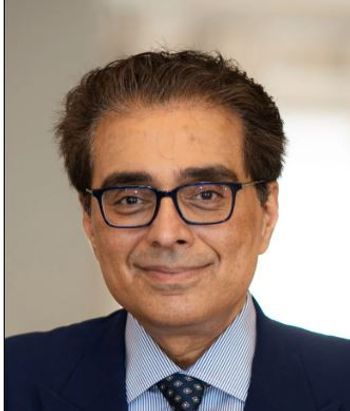
ASH: Dual-drug Treatment Accomplishes Blood Pressure Control
CHICAGO -- Initiating treatment with a combination of anti-hypertensive drugs gets 75% of patients' blood pressures under control, researchers reported here.
CHICAGO -- Initiating treatment with a combination of anti-hypertensive drugs gets 75% of patients' blood pressures under control, researchers reported here.
They said that a strategy of startling anti-hypertensive treatment with a combination drug paid off with an "unprecedented" percentage of high risk patients achieving their therapy goal.
The preliminary unblinded analysis of the Avoiding Cardiovascular Events through Combination Therapy in Patients Living with Systolic Hypertension (ACCOMPLISH) trial revealed that among the 9,698 patients who have been followed for 18 months, the average systolic blood pressure was 131.8 mm Hg, down from a starting point of 145.4 mm Hg.
"These are unprecedented figures," emphasized Kenneth Jamerson, M.D., of the University of Michigan in Ann Arbor, at the American Society of Hypertension meeting. "Only about 37% of Americans who are taking high blood pressure medication are achieving their treatment goals.
"We find substantial evidence to broaden the use of combination therapy as an initial strategy for the treatment of hypertension," Dr. Jamerson said.
In the trial, Dr. Jamerson and colleagues enrolled more than 11,400 patients who were being treated for high blood pressure and had at least one cardiovascular risk factor that made the population high risk for events.
The patients were told to stop whatever medication they were on and to begin taking a combination dose of either amlodipine combined with benazepril or amlodipine combined with hydrochlorothiazide. Amlodipine is a calcium channel blocker; benazepril is an angiotensin converting enzyme- inhibitor, and hydrochlorothiazide is a diuretic.
"There was no washout period in this trial," Dr. Jamerson said.
The study was designed to determine whether there is a different in long-term outcomes depending on which drug combination is used, but Dr. Jamerson said the preliminary data he was discussing shows that it is feasible to get patients' blood pressure under control with aggressive dosing of the combinations.
The primary endpoint in the study was the time to first event of a composite of cardiovascular morbidity and mortality - including death due to any cardiovascular event and non-fatal events, hospitalization for angina, resuscitation from sudden cardiac death and the need for a coronary revascularization procedure.
At the start of the trial, 37.5% of these high-risk patients were at their treatment goal, and overall 76% attained treatment goal after 18 months of therapy. About 65% of the 3,333 patients from Nordic countries reached the treatment goals, while at baseline 21% were at goal.
Of the 8,067 U.S. participants, 44% were at their goal to start the program, but at 18 months after treatment 80.5% were at their high blood pressure goals. About 71.8% of African American patients reached their goals, although only 38.7% were at goal at the start of the therapy.
Dr. Jamerson said that the overall U/S. cohort was able to lower their systolic blood pressure to 129 mmHg "one of the lowest figures ever achieved in large scale clinical trials."
"The preliminary results of the ACCOMPLISH trial do indicate that combination therapy is what we need to get patients to treatment goals," commented Joseph Izzo Jr., of the State University of New York at Buffalo.
He said that when patients are treated with monotherapy drugs there can be considerable differences between individuals in how they will respond. "When you add a second drug, it basically obliterates that difference, Dr. Izzo said. "Not only is the treatment for effective that with one drug, the therapy outcome is more predictable."
He said there will always be a need to check how patients are doing individually but he suggested the fixed dose combinations will get more people to their goals and do it more easily.
He also said that taking fewer pills to achieve the goal also resonates with the patient. "We need to get the pills in the patient before they can do any good," he said.
Dr. Jamerson said the final results of ACCOMPLISH are not expected for another 12 to 13 months.
Newsletter
Enhance your clinical practice with the Patient Care newsletter, offering the latest evidence-based guidelines, diagnostic insights, and treatment strategies for primary care physicians.



















































































































































































































































































